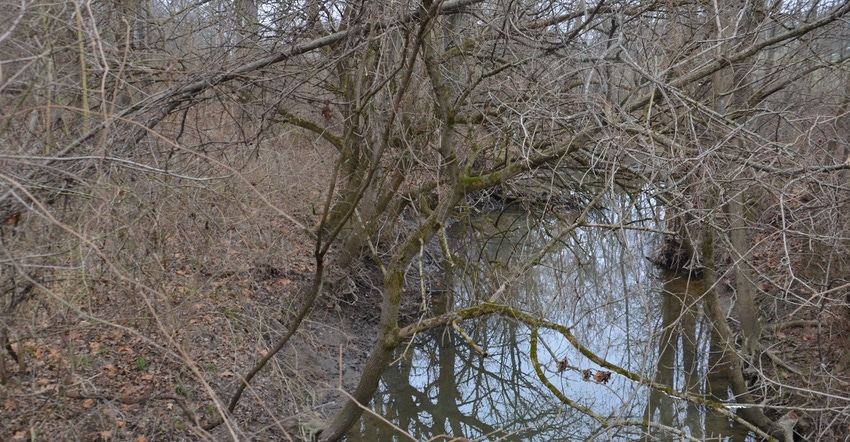January 31, 2022

The question of who addresses drainage issues in Indiana looms over farmers like a dark cloud. It’s preventing some from moving forward on drainage projects. Others are hesitant to clean ditch banks because they fear state authorities might intervene.
Steve Slonaker, Cambridge City, Ind., a farm manager and landowner, brought the issue to light. He was stopped from clearing the second half of a ditch by the Indiana Department of Natural Resources. DNR personnel insisted he get a permit, even though he had cleared half the ditch earlier with no permit. He obtained the permit and cleared the ditch, but since then, he has led the charge against what he believes is stronghanded tactics and government overreach.
“In Indiana, DNR has control over certain drainage issues, and the line has become blurred as to what the agency should control,” says Jeff Cummins, associate director of policy engagement for Indiana Farm Bureau Inc.
Many Indiana Farm Bureau members want this issue clarified. At one point, it seemed likely INFB would support legislative action now.
“As we dug deeper, there were many unanswered questions,” Cummins says. “For example, DNR’s interpretation of flood rules is more stringent than neighboring states, and even federal rules. Why should our rules be stricter?”
Study the issue
Cummins and other INFB leaders decided drafting legislation for 2022 was premature. “We all need time to investigate deeper,” Cummins told Indiana Prairie Farmer in December.
Sometimes, perhaps, great minds think alike. Before INFB could act, someone else did.
Sen. Jean Leising, Oldenburg, introduced Senate Bill 85. A synopsis of the bill indicates that it would create a drainage task force. The specific purpose would be gathering information to determine if there is a reason why state control should be favored over local control on these issues in Indiana, whereas neighboring states lean toward local control. The task force would report to the Legislature with recommendations by Dec. 1, 2023.
Slonaker reports that the bill passed the Natural Resources Committee on Jan. 10 unanimously, with no one speaking against it.
Right course?
Indiana Prairie Farmer sees value in study commissions and task forces, with a couple of qualifications. If a drainage task force is created and members take it seriously, the nearly two-year period would allow for collecting information and data. It would also allow regulators and those opposed to regulation to take a fresh look and apply common sense.
Financial support for soil conservation in Indiana resulted after a governor’s task force studied the issue in the mid-1980s. “T by 2000” kicked off in 1986, and although soil conservation still doesn’t receive the funding it deserves, it might have never received support without that task force.
There are two potential drawbacks. First, if this is just kicking the can down the road, it won’t solve anything. Fortunately, that doesn’t appear to be the case.
Second, there is a situation in Wayne County, Ind., involving two farm families that can’t wait two years. Due to changes in flood maps, DNR now says their new houses are in a flood plain and must be raised up or torn down this year. That’s even though both families had valid county building permits. If it takes legislative action to prevent this tragedy, so be it.
Meanwhile, here’s hoping that if a task force is created, information collected leads to a fair discussion as soon as is practical.
Comments? Email [email protected].
You May Also Like




